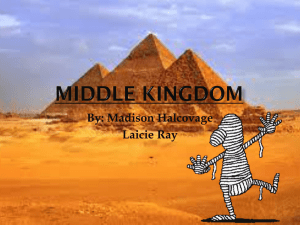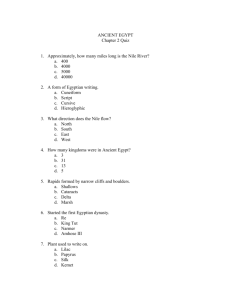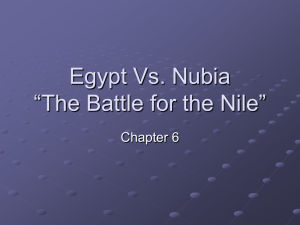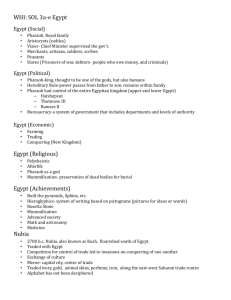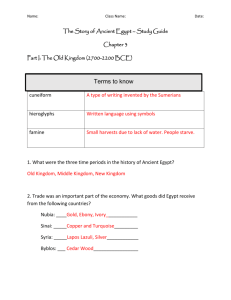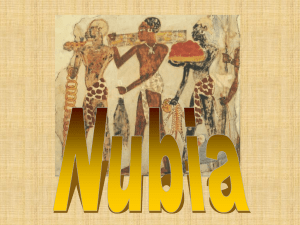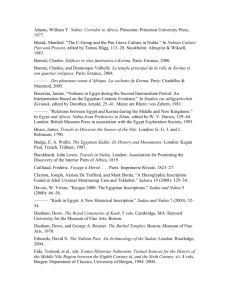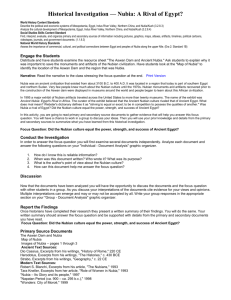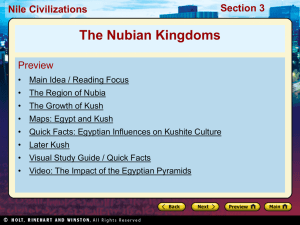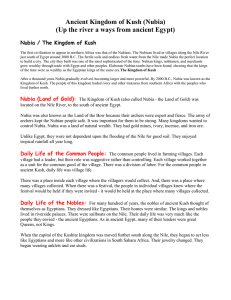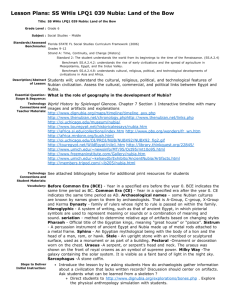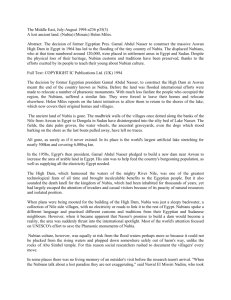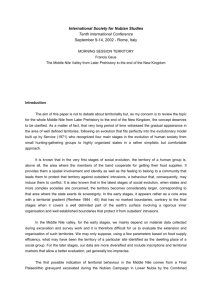Ch. 3 Reading Questions
advertisement
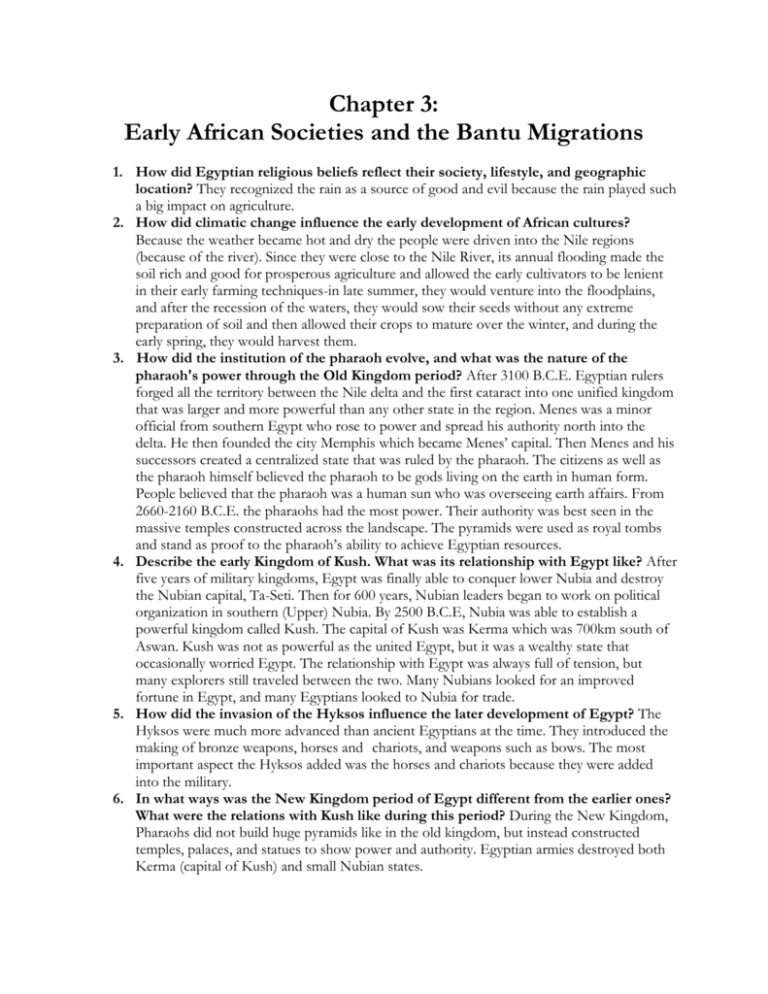
Chapter 3: Early African Societies and the Bantu Migrations 1. How did Egyptian religious beliefs reflect their society, lifestyle, and geographic location? They recognized the rain as a source of good and evil because the rain played such a big impact on agriculture. 2. How did climatic change influence the early development of African cultures? Because the weather became hot and dry the people were driven into the Nile regions (because of the river). Since they were close to the Nile River, its annual flooding made the soil rich and good for prosperous agriculture and allowed the early cultivators to be lenient in their early farming techniques-in late summer, they would venture into the floodplains, and after the recession of the waters, they would sow their seeds without any extreme preparation of soil and then allowed their crops to mature over the winter, and during the early spring, they would harvest them. 3. How did the institution of the pharaoh evolve, and what was the nature of the pharaoh's power through the Old Kingdom period? After 3100 B.C.E. Egyptian rulers forged all the territory between the Nile delta and the first cataract into one unified kingdom that was larger and more powerful than any other state in the region. Menes was a minor official from southern Egypt who rose to power and spread his authority north into the delta. He then founded the city Memphis which became Menes’ capital. Then Menes and his successors created a centralized state that was ruled by the pharaoh. The citizens as well as the pharaoh himself believed the pharaoh to be gods living on the earth in human form. People believed that the pharaoh was a human sun who was overseeing earth affairs. From 2660-2160 B.C.E. the pharaohs had the most power. Their authority was best seen in the massive temples constructed across the landscape. The pyramids were used as royal tombs and stand as proof to the pharaoh’s ability to achieve Egyptian resources. 4. Describe the early Kingdom of Kush. What was its relationship with Egypt like? After five years of military kingdoms, Egypt was finally able to conquer lower Nubia and destroy the Nubian capital, Ta-Seti. Then for 600 years, Nubian leaders began to work on political organization in southern (Upper) Nubia. By 2500 B.C.E, Nubia was able to establish a powerful kingdom called Kush. The capital of Kush was Kerma which was 700km south of Aswan. Kush was not as powerful as the united Egypt, but it was a wealthy state that occasionally worried Egypt. The relationship with Egypt was always full of tension, but many explorers still traveled between the two. Many Nubians looked for an improved fortune in Egypt, and many Egyptians looked to Nubia for trade. 5. How did the invasion of the Hyksos influence the later development of Egypt? The Hyksos were much more advanced than ancient Egyptians at the time. They introduced the making of bronze weapons, horses and chariots, and weapons such as bows. The most important aspect the Hyksos added was the horses and chariots because they were added into the military. 6. In what ways was the New Kingdom period of Egypt different from the earlier ones? What were the relations with Kush like during this period? During the New Kingdom, Pharaohs did not build huge pyramids like in the old kingdom, but instead constructed temples, palaces, and statues to show power and authority. Egyptian armies destroyed both Kerma (capital of Kush) and small Nubian states. kit 7. What was society like in Egypt and Nubia in terms of both social classes and gender roles? Both Egypt and Nubia had patriarchal societies. In Egypt, the women did not play any important roles. Women mainly stayed at home and cooked/ cleaned/ sowed/ etc… Women also served as regents for young rulers. In a Nubian society, however, women were very important. They could reign jointly with kings, and they could govern in their capacity as weight. Women were treated more as equals in Nubia more than Egypt. In both Egypt and Nubia some women got a formal education and became scribes. In terms of social classes, prisoners of war and slaves were at the bottom and preists and rulers were at the top. 8. What kind of transportation systems did the Egyptians use, and how did their transportation influence the development of their trade networks? Traveled up and down the Nile River Valley and had Nile trade networks. 9. What was the significance of the cult of Osiris? Because of the story of Osiris’ death and resurrection, he is associated with the Nile (due to annual flooding and receding), crops, and immortality. He was honored through a religious cunt that required high morals. For those who possessed high morals, hope of eternal reward was present. It cast its message in terms understandable to cultivators in early agricultural societies. 10. How did the Bantu migrations influence the development of the societies of subSaharan Africa? As the Bantus migrated, their languages slowly changed into more than 500 related Languages (most prominent family of languages in all of sub-Saharan Africa). Because they were gradual migrations, the language and ethnic community spread gradually. Once they produced iron tools and weapons, iron metallurgy spread as well.


